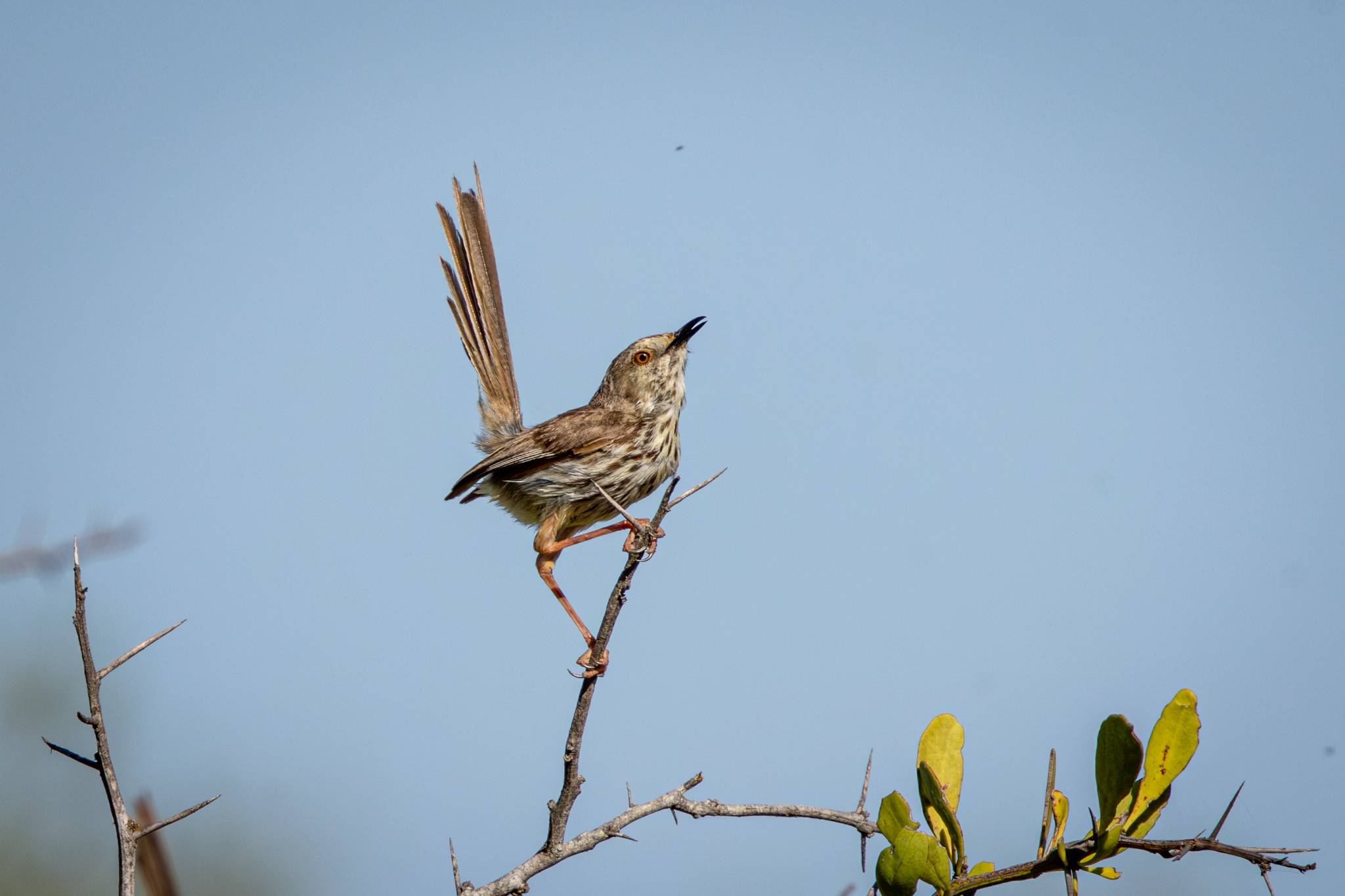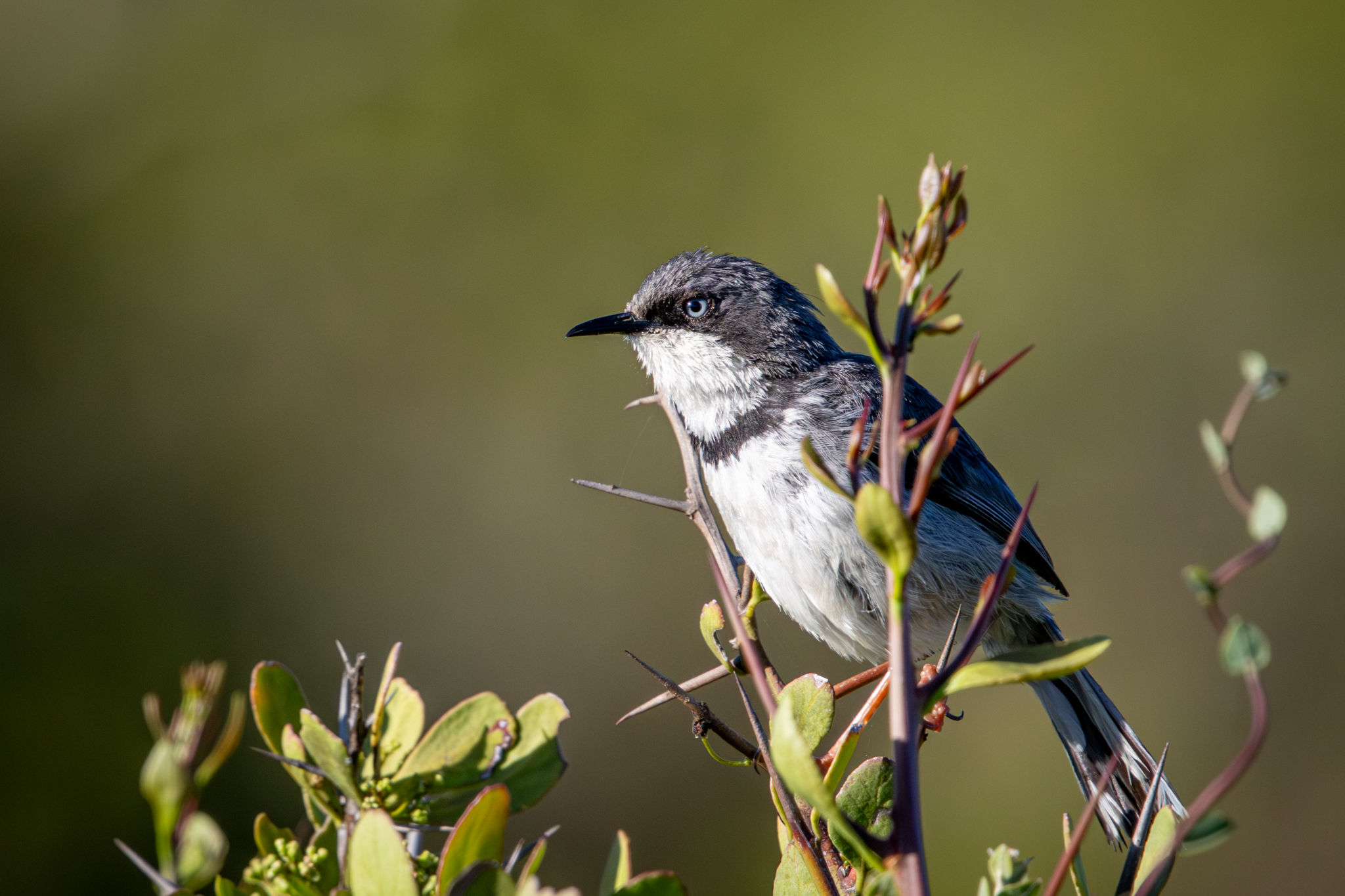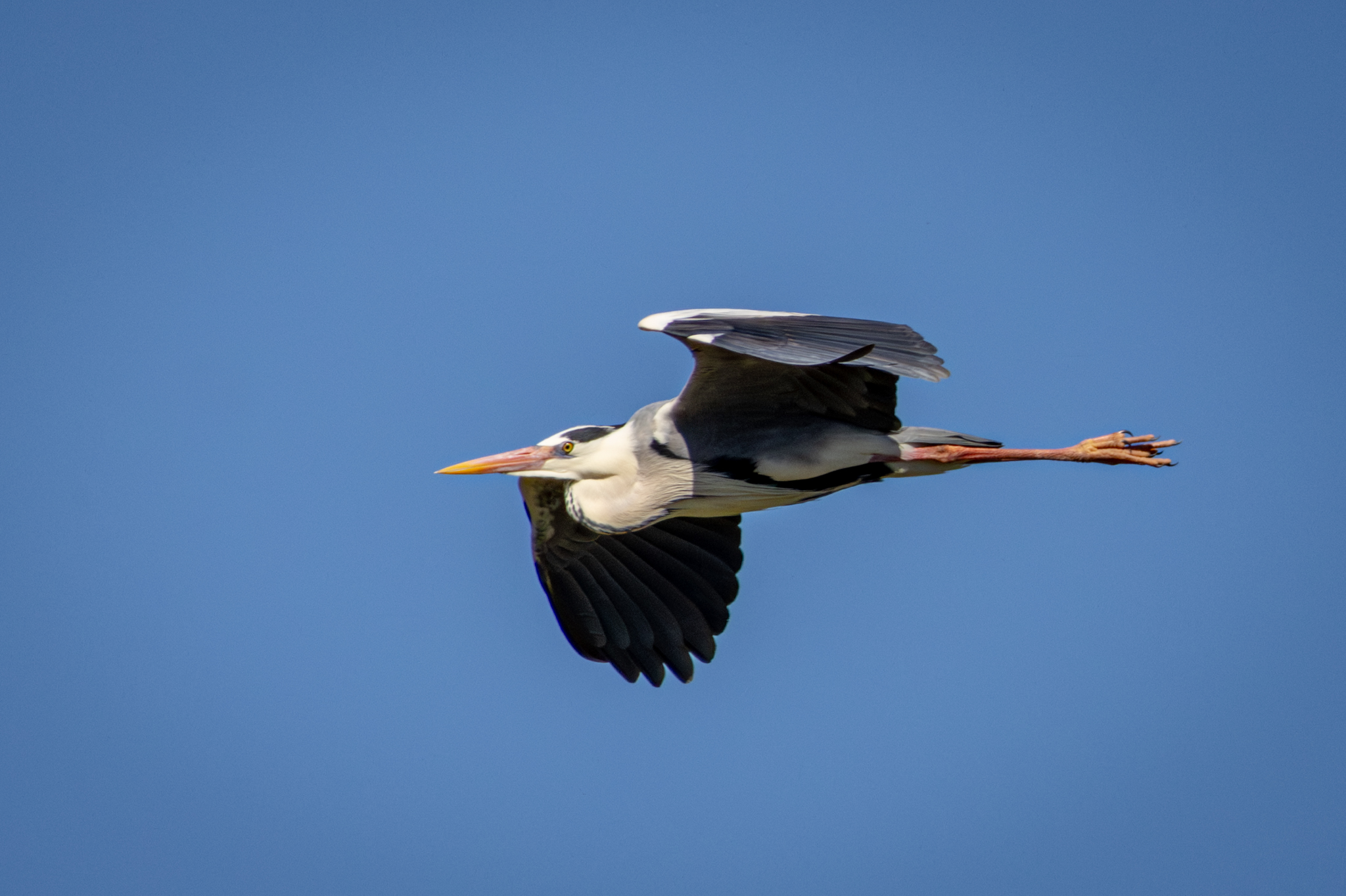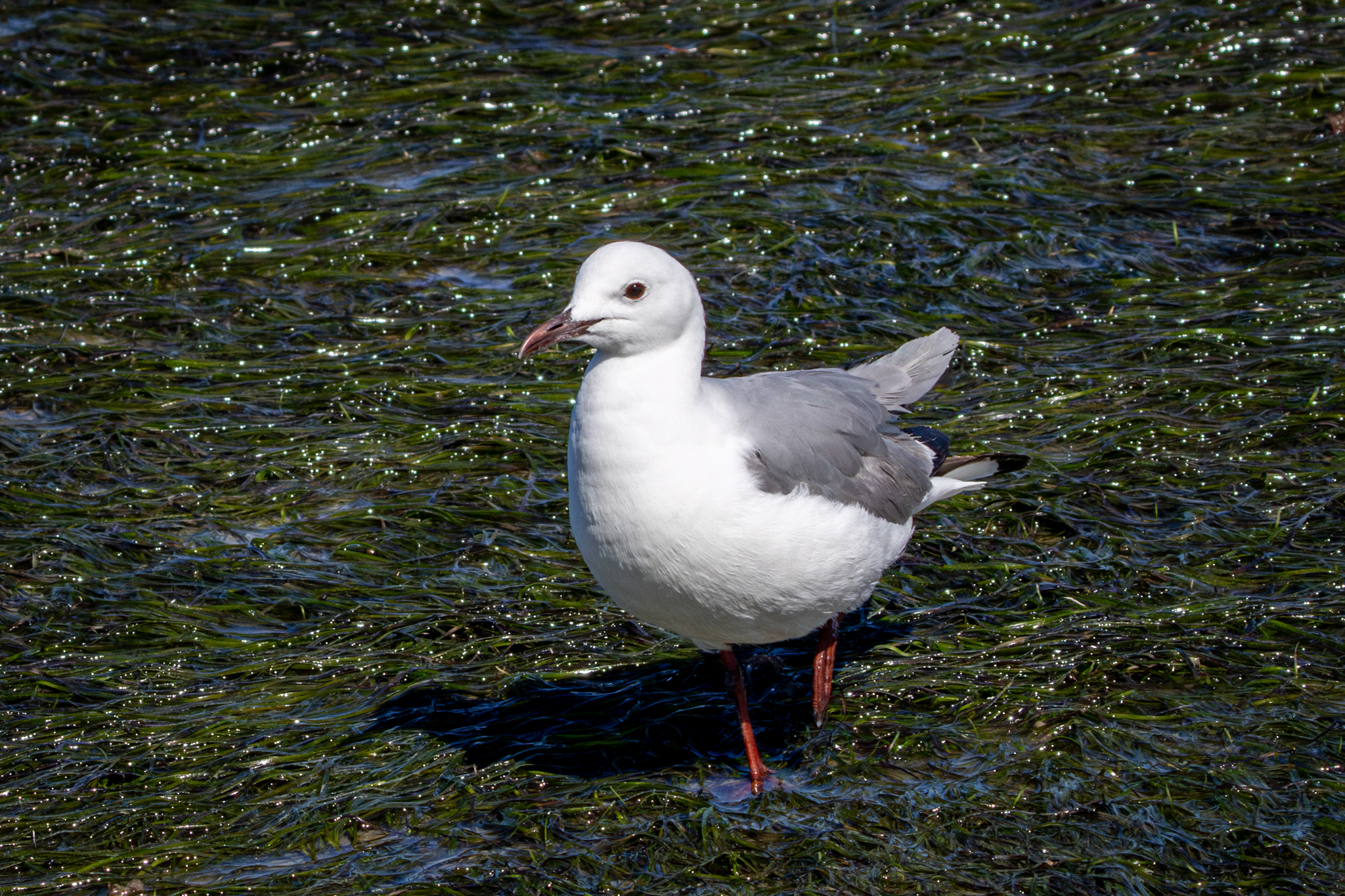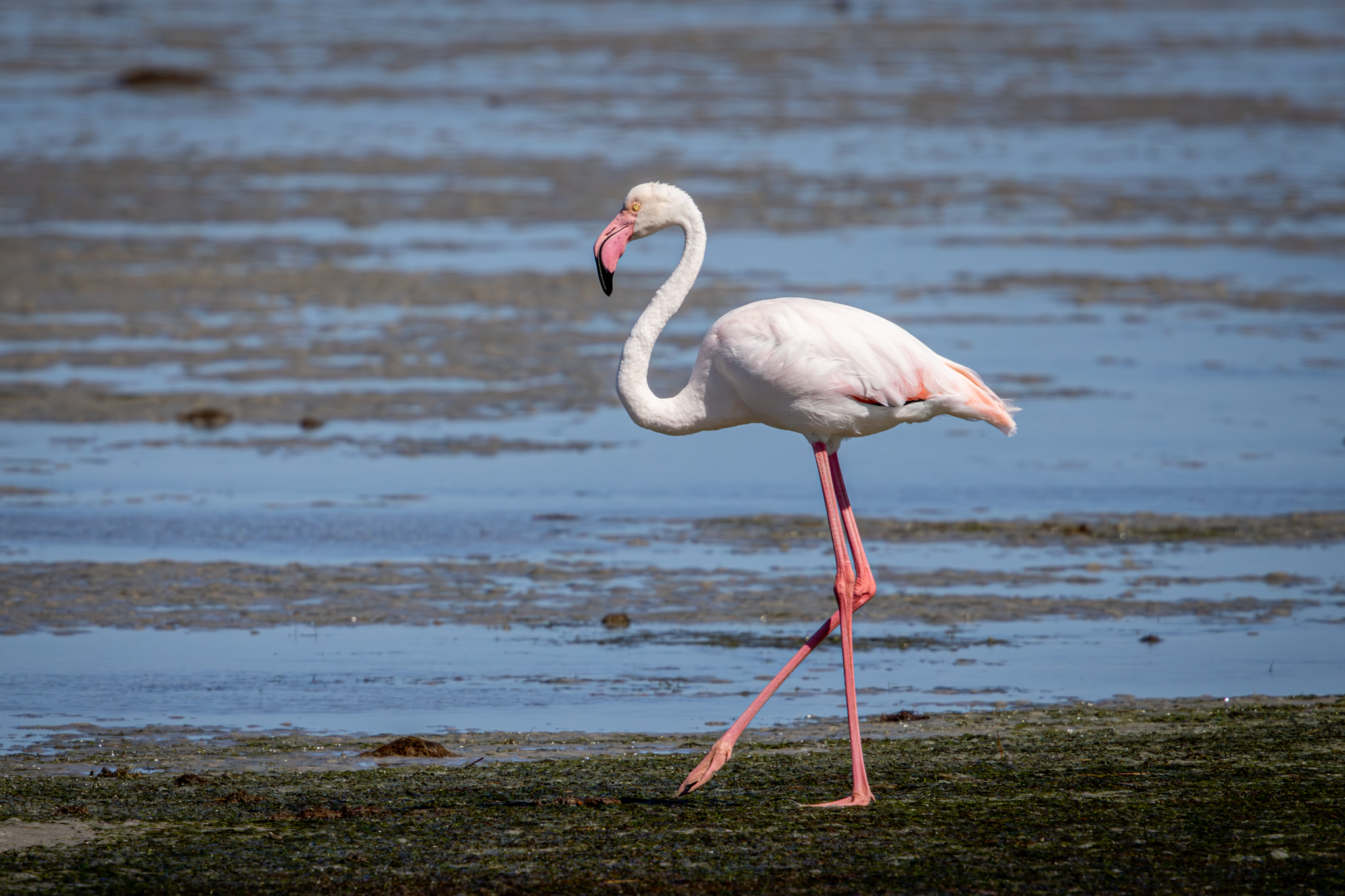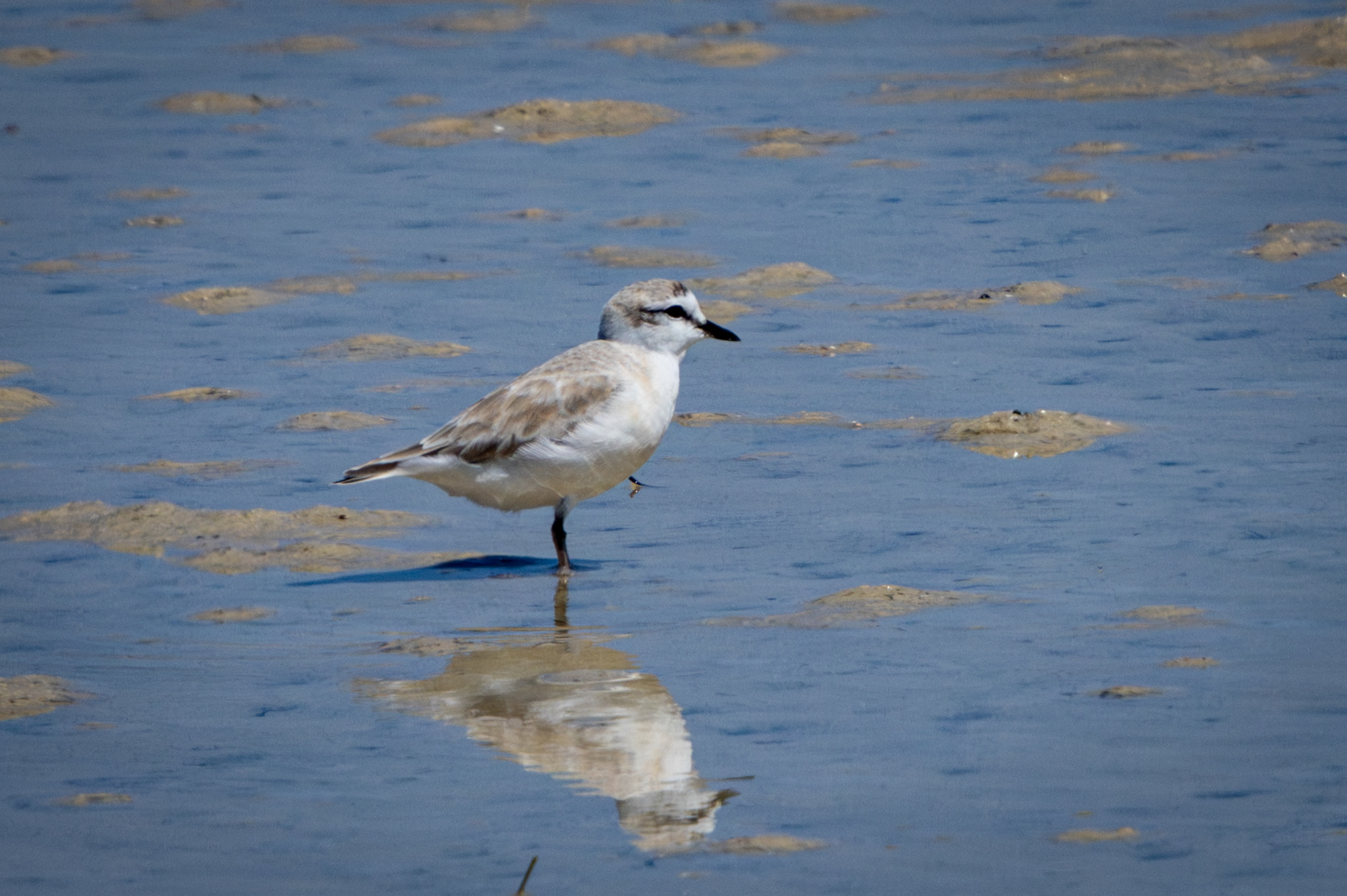Our first full day of Birding in South Africa was October 9, 2025. After introductions and exploring the neighborhood near the Cinnamon House the day before, we had an early breakfast and set out to find new birds in a couple areas North-West of Cape Town. Our first stop was West Coast National Park.
As soon as we entered the park we began spotting the first of the 35 Lifers I observed that day. So many in fact that I’m splitting this first day into two posts. This first post is about the birds seen in the open fields the marshland region of the park and the next post will be about the birds seen in a salt pan outside of the park.
Many of the birds we saw in the open fields at West Coast NP were common to the region so we saw most of the same species several times while the southern part of South Africa. One of the first Lifers seen there was a Karoo Prinia. Many South African species’ names included the word Karoo, which means desert, although most of the time we saw them when we were not in a desert region. The Karoo Prinia was an active bird and often perched out in the open so getting a shot of them was easy.
Another commonly seen bird in the region was the Bar-throated Apalis. Check out those baby-blue eyes!
One of the most frequently seen birds was the Cape Bulbul. Quite a different type of eye but nonetheless distinguishing. Many other South African bird species’ had the word “Cape” as the first part of their name (i.e. Cape Sugarbird, Cape Grassbird, Cape Siskin). The southern part of South Africa is referred to as a Cape because it sticks out like a huge promontory into the ocean.
One of the most commonly seen raptors in South Africa was the Black Kite. Note the yellow bill on it (it is commonly known as a Yellow-billed Black Kite). One of the prominent features of the Black Kite is that to holds its tail perpendicular to its body (like the vertical tail of an airplane) and uses it as a rudder to steer it left and right.
Similar to North America’s Great Blue Heron, the Gray Heron was often seen around areas with water. This one flew over us as it made its way to its nest in a tall tree nearby.
As we traveled down the road through the fields we ended up in a marshy area with lots of shorebirds and wading birds. We were introduced to several new types of Plovers like the Kittlitz’s Plover below. Note the vegetation it was strolling through – it looks like something out of prehistoric times. We often saw this around marshes in beautiful shades of yellow, orange, and red.
The Hartlaub’s Gull was the most commonly seen gull in South Africa (with the Kelp Gull as a close second). Below is a shot of a Hartloub Gull foraging in the marsh near the blind we were positioned in.
The marsh was huge and we were able to see thousands of birds foraging on it. One of the highlights was the sighting of a Eurasian Oystercatcher (seen through a scope but too distant to photograph), an extremely rare bird – so rare our it was a Lifer for our local guide David. Much easier to photograph were the Greater Flamingos that foraged their way past the front of the Seeberg Hide (an enclosed wooden structure with a narrow opening facing the marsh designed for bird viewing).
Another new plover spotted from the hide was the White-fronted Plover, so named for its white forehead.
I’ll wrap things up today with a shot of the Three-banded Plover. I didn’t pay that much attention to its eye until I studied pictures of it at home – the red eye-ring stands out prominently.
In my next post I’ll describe our visit later the same day to a salt pan where we saw a special type of plover.
CLICK HERE to see all the posts about our South Africa Bird Tour. Karen and I have had the opportunity to travel to many interesting places in search of birds. If you would like read about some of our other Bird Tours CLICK HERE.
If you enjoy seeing beautiful pictures of birds from around the world and reading about them CLICK HERE to sign up for our mailing list. Members can post their own GreatBirdPics and learn more about bird photography techniques.
